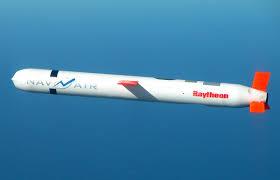Understanding the Tomahawk Missile and Its Impact

Introduction
The Tomahawk missile is one of the most recognisable and pivotal weapons systems used by the United States military. Developed during the Cold War, this long-range, all-weather missile has changed the dynamics of modern warfare. With its precision strike capabilities, the Tomahawk missile plays a crucial role in the strategic arsenal, allowing for remote engagement of targets with minimal risk to personnel. As global tensions rise, understanding the implications of this missile becomes increasingly relevant.
Overview of Tomahawk Missile
The Tomahawk cruise missile, manufactured by Raytheon, is designed to carry out precision strikes against high-value targets, including enemy infrastructure and military installations. First introduced in 1983, it has undergone several upgrades, and current variants can travel over 1,000 miles, equipped with advanced guidance systems that allow it to navigate complex terrains and evade enemy defenses. The missile can be launched from ships, submarines, and even land-based platforms, making it a versatile asset in naval and aerial operations.
Recent Developments and Deployments
In recent years, the Tomahawk missile has been prominently featured in various military operations. For instance, it was utilized during the airstrikes in Syria in response to chemical weapon attacks, demonstrating its effectiveness in achieving swift, decisive action with minimal collateral damage. Additionally, as tensions escalate with adversaries like Russia and China, the U.S. Navy has increased its focus on enhancing Tomahawk capabilities, including integrating it with emerging technologies such as artificial intelligence.
Geopolitical Significance
The strategic importance of the Tomahawk missile extends beyond its technical capabilities. It serves as a deterrent—signalling the U.S. military’s readiness to respond to threats while maintaining a strategic edge over potential adversaries. Countries that possess or develop similar missile technology are thus drawn into an arms race, raising questions about global security dynamics. The missile also plays a role in international relations, as its deployment in theatres of conflict often sparks debates about sovereignty, legality, and military ethics.
Conclusion
The Tomahawk missile remains a vital component of the U.S. military’s strategy, enabling precise long-range strikes that can be executed with immediacy. As geopolitical tensions continue to evolve, understanding the operational use and implications of the Tomahawk will be crucial for policymakers and military analysts alike. The future of warfare is increasingly defined by such advanced weaponry, signalling a shift towards more sophisticated and calculated military engagements.
